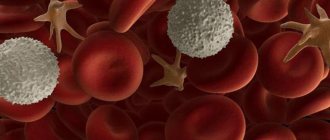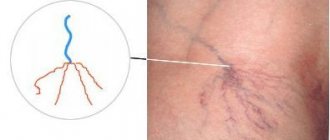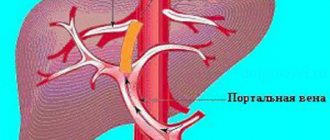The phenomenon of osmotic pressure in water was discovered and described back in 1748 by the French experimental physicist Jean-Antoine Nollet.
Conducting his experiment, Nolle filled a vessel with ethanol and, closing it with a dense membrane, lowered it into a container of clean water. Under the influence of physical forces, water entered the vessel with concentrated liquid and created pressure there, under the influence of which the vessel swelled. During his experiment, five hours was enough for the volume in the vessel to increase and the membrane to swell. Then he decided to conduct the opposite experiment and filled the flask with water, placing it in a vessel with alcohol. The volume in the flask began to decrease, and the membrane began to sag downward.
Nolle explained this phenomenon as the selective transfer of molecules through a membrane: when a liquid with a lower density easily passed through the walls of the membrane, the second, concentrated one, could not diffuse.
It was later proven that if pressure is applied to a concentrated solution, the transfer of solvent molecules can be slowed down or stopped depending on the amount of pressure. The smallest pressure, excluding the pressure of the solvent itself, that must be applied to the solution in order to prevent the movement of molecules of a pure substance through the membrane was called “somatic”, and the process of random transfer of solvent molecules began to be called “osmosis”.
What is osmotic pressure and how does it affect the human body
Osmosis occurs in the human body at the boundary of two different solutions separated by a semi-permeable membrane. One liquid has the ability to penetrate through the walls into the second, which has already been exposed to the first.
Using the example of the human body, we can show the nature of osmotic pressure: water passes through the membrane and enters the blood. Plasma contains a certain concentration of mineral salts, glucose, and proteins. The osmotic pressure indicator lets you know whether the body is sufficiently provided with the exchange of water between the bloodstream and the organs that are located on the outside of the vessels. Osmotic pressure in the human body is the amount of force that forces water to move through the protective membrane of red blood cells.
It is mainly salt that affects osmosis in the blood plasma, because it contains proteins, sugar and urea in small quantities.
The optimal concentration of saline solution in the bloodstream should be 0.9%. This indicator is called isotonic. It is equal to the amount of blood osmosis. When the value exceeds this indicator, the osmotic pressure becomes hypertonic. If this figure is lower, it is hypotonic. In order for the human body to function normally, osmotic pressure must be within optimal values.
It is clear that the osmosis rate cannot be constant, but if the salt concentration is increased or decreased for a short time, then a healthy excretory system can easily remove excess fluid, saline solutions and other substances. In this case, the body itself takes care of the presence of the correct amount of salt inside it. When a person’s health fails and the osmotic pressure is either low or high for a long period, this can cause the occurrence of certain diseases.
Among the most likely consequences is hemolysis. This is a condition in which the membranes of red blood cells burst and they dissolve in the liquid. The appearance of blood containing such dead red cells is slightly transparent. If the parameters of the osmosis force are far from optimal, then the elasticity of cells, tissues and entire organs will disappear. Both with increased osmotic pressure and with decreased pressure, red blood cells have the same fate - destruction.
The concept of osmotic and oncotic pressure
Osmosis is the process of transfer of liquid from a solution with a lower concentration (hypotonic) to an adjacent one with a higher concentration (hypertonic). Such a transition is possible only under appropriate conditions: with the “neighborhood” of liquids and with the separation of a permeable (semi-permeable) partition. At the same time, they exert a certain pressure on each other, which in medicine is usually called osmotic.
In the human body, each biological fluid is just such a solution (for example, lymph, tissue fluid). And cell walls are “barriers”.
One of the most important indicators of the state of the body, the content of salts and minerals in the blood is osmotic pressure
Blood osmotic pressure is an important vital indicator, reflecting the concentration of its constituent elements (salts and minerals, sugars, proteins). It is also a measurable quantity that determines the force with which water is redistributed into tissues and organs (or vice versa).
It has been scientifically determined that this force corresponds to the pressure in saline solution. This is what doctors call sodium chloride solution with a concentration of 0.9%, one of the main functions of which is plasma replacement and hydration, which helps combat dehydration, exhaustion in case of large blood losses, and it also protects red blood cells from destruction when drugs are administered. That is, relative to blood it is isotonic (equal).
Oncotic blood pressure is a component (0.5%) of osmosis, whose value (necessary for the normal functioning of the body) ranges from 0.03 atm to 0.04 atm. Reflects the force with which proteins (in particular albumins) act on neighboring substances. Proteins are heavier, but their number and mobility are inferior to salt particles. Therefore, oncotic pressure is much less than osmotic pressure, but this does not reduce its importance, which is to maintain the transition of water and prevent reabsorption.
No less important is such an indicator as oncotic blood pressure
An analysis of the plasma structure shown in the table helps to imagine their relationship and the significance of each.
| Elements of blood plasma and their proportion | ||
| Water | 90-92% | |
| Remainder | Organics: · Protein particles. · Nitrogenous residues. · Nitrogen-free substances. · Enzymes and proenzymes. | 7-8% |
| Inorganics: · Cations. · Anions. | 0.01 | |
Regulatory and metabolic systems (urinary, lymphatic, respiratory, digestive) are responsible for maintaining a constant composition. But this process begins with signals sent by the hypothalamus, which responds to irritation of osmoreceptors (nerve endings in the cells of blood vessels).
The level of this pressure directly depends on the functioning of the hypothalamus
For proper functioning and viability of the body, blood pressure must correspond to cellular, tissue and lymphatic pressure. When the body systems work properly and harmoniously, its value remains constant.
It can increase sharply during physical activity, but quickly returns to normal.
Which indicators are considered normal and which are considered deviations from the norm?
During this examination of the blood, its freezing point is found. The optimal value for a blood solution is minus 0.56-0.58 degrees. If converted to atmospheric pressure, then normal indicators of the strength of osmosis are 7.5-8 millimeters of mercury. If the indicator is either greater or less than the specified limits, its value will be a deviation from the optimal one.
Proteins, like salts, also create plasma osmotic pressure, but weaker in comparison (its value is 26-30 millimeters of mercury). This pressure is also called oncotic pressure, and it changes the value of the overall indicator.
What affects osmosis rates
The strength of osmosis is influenced by proper nutrition and drinking regime, as well as the healthy functionality of the excretory organs. The amount of salts in the plasma directly affects osmotic pressure. With an excess of them, osmosis will increase, and with a deficiency, it will decrease.
And the rate of fluid intake should be at least 1.5 liters per day, otherwise the body will become dehydrated and the blood will gain increased viscosity.
But, fortunately, when there is a shortage of fluid, a person becomes thirsty and replenishes his water supply. The work of the kidneys, bladder and sweat glands also regulate the amount of salts and solvent in the body, but if the increased concentration of salt is constant, this provokes its retention in the cells. Then the walls of the vessels become thicker, and the lumens of the intercellular space narrow.
As a result, fluid retention occurs, which leads to an increase in the volume of blood moving through the vessels, which provokes an increase in blood pressure. All this negatively affects the functioning of the cardiovascular system and causes the appearance of edema.
What does the osmotic value depend on?
Osmotic pressure depends on the content of electrolytes, which includes blood plasma. Those solutions that are similar in concentration to plasma are called isotonic. This includes the popular saline solution, which is why it is always used for IVs when it is necessary to replenish the water balance or when there has been blood loss.
It is in an isotonic solution that injected drugs most often dissolve. But sometimes it may be necessary to use other means. For example, a hypertonic solution is necessary to remove water into the vascular lumen, and a hypotonic solution helps cleanse wounds of pus.
The osmotic pressure of the cell may depend on normal nutrition.
For example, if a person has consumed a large amount of salt, then its concentration in the cell will increase. In the future, this will lead to the fact that the body will strive to balance the indicators, consuming more water to normalize the internal environment. Thus, water will not be removed from the body, but accumulated by cells. This phenomenon often provokes the development of swelling, as well as hypertension (due to an increase in the total volume of blood circulating in the vessels). Also, a cell may burst after being oversaturated with water.
To more clearly explain the changes that occur in cells immersed in different environments, one study should be briefly described: if a red blood cell is placed in distilled water, it will be saturated with it, increasing in size until the membrane ruptures. If you place it in an environment with a high concentration of salt, it will gradually begin to release water, wrinkle, and dry out. Only in an isotonic solution, which has the same isosmotic as the cell itself, will it remain at the same level.
The same thing happens to cells inside the human body. That is why the observation is so common: after eating salty food, a person is very thirsty. This desire is explained by physiology: the cells “want” to return to the usual level of pressure, under the influence of salt they shrink, which is why a person has a burning desire to drink plain water in order to replenish the missing volumes and balance the body.
Sometimes patients are given mixtures of electrolytes specially purchased from pharmacies, which are then diluted in water and taken as a drink. This allows you to replenish fluid loss in case of poisoning.
Measurement methods
There are two most widely used methods for measuring osmosis pressure. Doctors choose which one to use based on the situation.
Cryoscopic method
Since the freezing point of blood directly depends on the amount of substances in it, this method is often used. The more saturated the plasma, the lower the temperature it solidifies. The osmosis indicator is an important parameter in the functioning of the body, and it shows whether the solvent (water) is present in it in optimal quantities.
Osmometer measurement
The second measurement option suggests doing this using a special device - an osmometer. It consists of 2 flasks with a partition. The passage between them is partial.
Blood is poured into one of them and covered with a lid with a scale, and solution into the other. It can be hypertonic, hypotonic or isotonic. Look at the scale readings in the vessel.
What happens when there are deviations?
With an increase in blood osmotic pressure, water cells move from red blood cells into the plasma, as a result of which the cells become deformed and lose their functionality. When the concentration of osmoles decreases, the saturation of the cell with water increases , which leads to an increase in its size and deformation of the membrane, which is called hemolysis.
Hemolysis is characterized by the fact that during it the most numerous blood cells - red cells, also called erythrocytes - are deformed, then hemoglobin protein enters the plasma, subsequently making it transparent.
Hemolysis is divided into the following types:
| Type of hemolysis | Characteristic |
| Osmotic | Progresses with the decline of the UDC. Leads to an increase in red blood cells, followed by deformation of their membrane, and the release of hemoglobin |
| Mechanical | This type of hemolysis occurs due to a strong mechanical effect on the blood. As an example, when a test tube with blood is shaken vigorously |
| Biological | Progresses under the influence of immune hemolysis, blood transfusions that do not match the blood group, and with bites of certain types of snakes |
| Thermal | Develops when blood is thawed or frozen |
| Chemical | Progresses under the influence of substances that deform the protein membrane of red cells. Alcoholic drinks, essential oils, chloroform, benzene and others can affect this |
In research, both clinical and scientific, osmotic hemolysis is used to determine the quality indicators of red cells (red cell osmotic resistance method), as well as the resistance of red cell membranes to deformation in solution.
Normalization methods
The human body has the ability to self-regulate osmotic pressure. When a corresponding impulse is received from the brain to reduce the volume of intercellular fluid, a hormone is formed that enters the blood. Then the kidneys react to its presence.
Blood also has the ability to bring osmotic pressure parameters to optimal values, acting as a buffer device both when the pressure associated with osmosis increases and when it decreases.
This occurs due to the redistribution of ions between the blood plasma and red cells, and the “ability” of proteins in the blood to attach or release ions.
Features of osmotic pressure
While hydrostatic pressure forces fluid out of the capillary, osmotic pressure forces it back. Osmotic pressure depends on osmotic concentration gradients , that is, the difference in solute concentrations in the blood and tissue fluid. From an area of lower solute concentration, water is directed through a semi-permeable membrane to areas of higher concentration.
The mechanisms of osmosis are most clearly demonstrated by living nature using the example of terrestrial plants. Due to them, the most important life processes occur. The absolute values of this indicator in plants are quite high. The highest osmotic pressure is characteristic of the cells of fruit trees , sugar beets and grapes. It is due to high intracellular pressure that fruits become elastic and juicy.
When considering the processes occurring in the blood and tissue fluid, it should be noted that the formed blood elements do not affect the gradients of osmotic concentration. The osmotic pressure of the blood is mainly provided by plasma proteins. Due to their large size and chemical structure, they do not dissolve, but are dispersed (or suspended) in their liquid medium, forming a colloid rather than a solution.
Pain in the rectum in women after defecation
The pressure created by the concentration of colloidal proteins in the blood is called colloidal osmotic pressure of the blood. Its effect on capillary exchange explains the reabsorption of water. Plasma proteins cannot move through the semipermeable membrane of the capillary cells and therefore remain in the plasma. As a result, blood has a higher colloidal concentration and a lower water concentration than tissue fluid.
Thus, water is removed from the tissue fluid back into the capillary, carrying with it dissolved molecules of metabolic products. This mechanism underlies the reabsorption process.
Preventive methods
The regulation of the force of osmosis is influenced by the kidneys. If the body needs additional fluid, then the saturation of the blood with active substances will be excessive, and this provokes an increase in pressure. Therefore, you need to be attentive to your feelings, and if thirst arises, it must be quenched immediately.
You should also adhere to proper nutrition:
- Monitor the amount of salt in food. Oversalting and excessive use of spices can lead to a decrease in the permeability of blood vessels due to the presence of salt deposits on their walls.
- Limit drinks such as coffee, Coca-Cola, beer. They can provoke red blood cells to stick together and have a diuretic effect, that is, they actively remove fluid from the body.
- You need to give up various diets and fasting. These experiments on oneself lead to a decrease in the level of proteins in the blood, and this changes the viscosity of the blood and contributes to the occurrence of thrombosis, causes exhaustion and a feeling of fatigue, and a person’s defenses decrease.
The power of osmosis in the human body is responsible for the optimal redistribution of fluid, because the amount of active substances must be at a certain level. This is a very important indicator that illuminates the state of health. In order for its values to be within normal limits, it is useful to drink more water and add salt to food in moderation.











